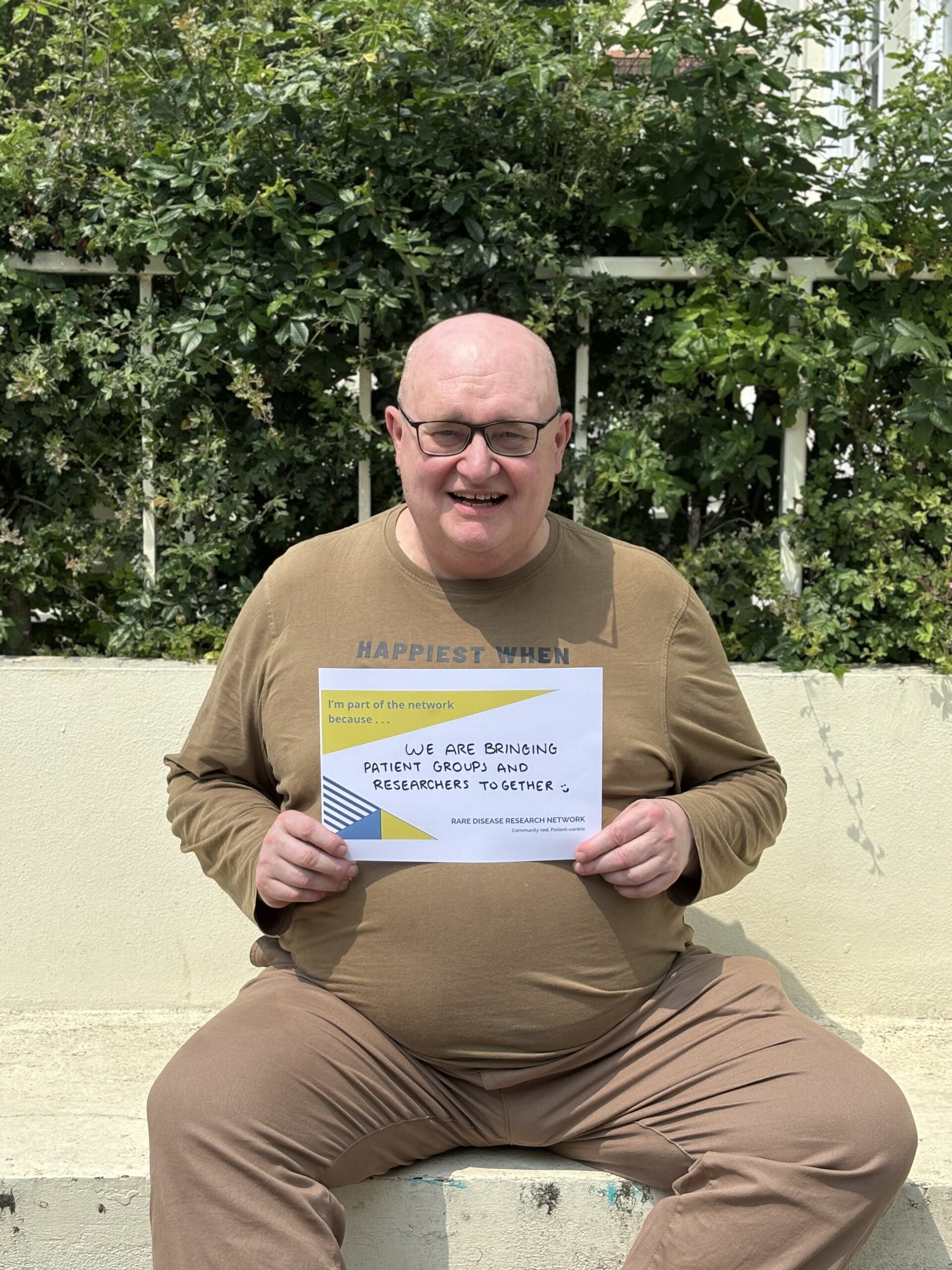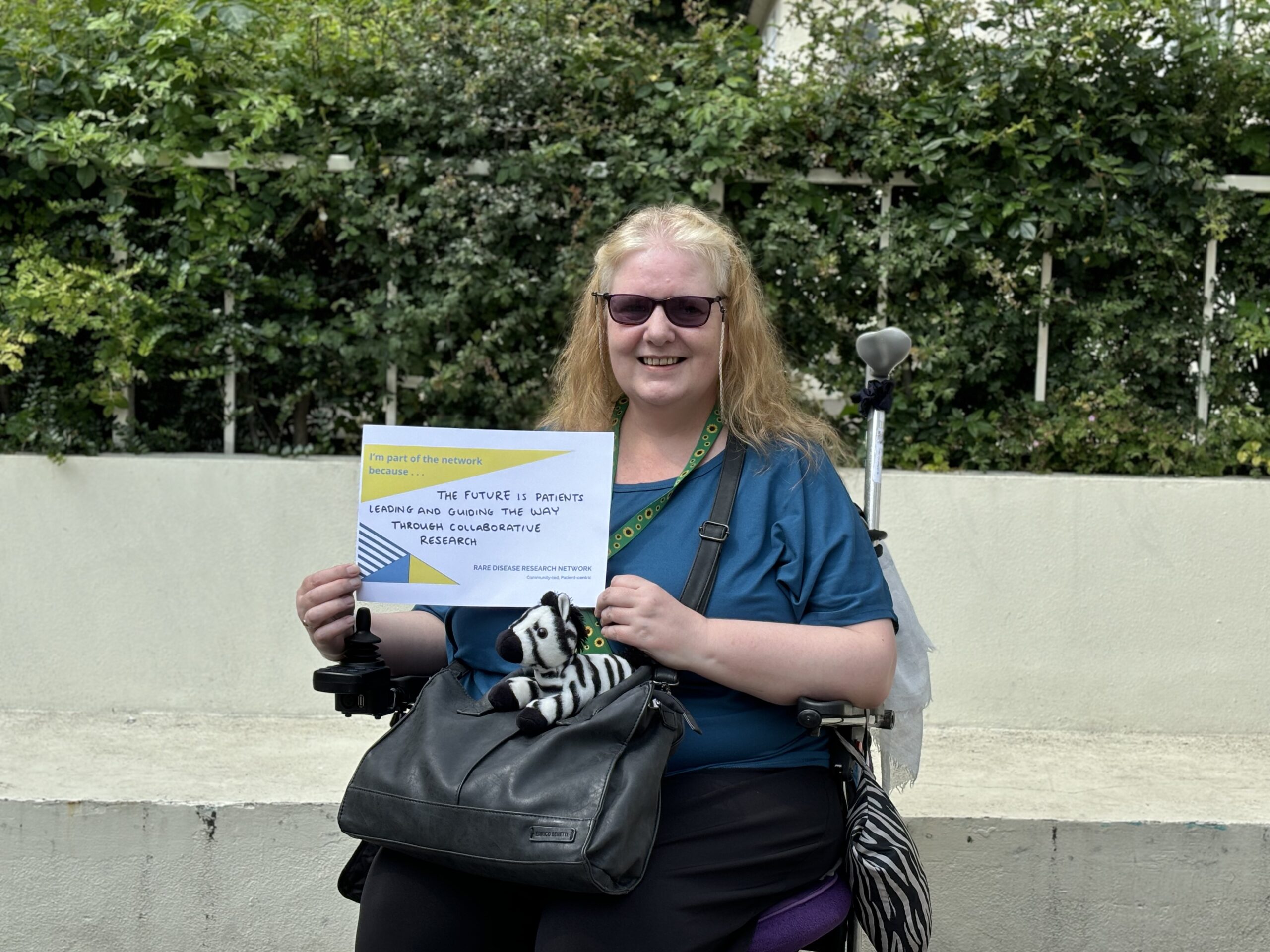
23rd March 2024
In the world of rare disease research, the traditional model has long been investigator-led, with researchers and institutions setting the agenda. But what if we turned that model on its head? What if the people who live with these conditions—the patients themselves—could decide the research questions, lead the studies, and shape the future of treatment? This revolutionary idea is the driving force behind the Rare Disease Research Network (RDRN), a platform built from the ground up by the rare disease community, for the rare disease community.
This isn’t just another example of patient and public involvement (PPI), where patient voices are added to a research project as an afterthought. The RDRN is something far more radical: a network where community members drive every aspect of the project. It’s co-production in its truest form, with patients leading the way at every turn.
The seeds for the RDRN were sown in late 2023 when a group of patients, researchers, and advocates came together with a shared vision: to create a space where the rare disease community could actively shape research. Backed by an NIHR Programme Development Grant, this working group embarked on a 15-month journey to build the platform. Every decision, from the design of the user interface to the types of support offered, was made collaboratively.
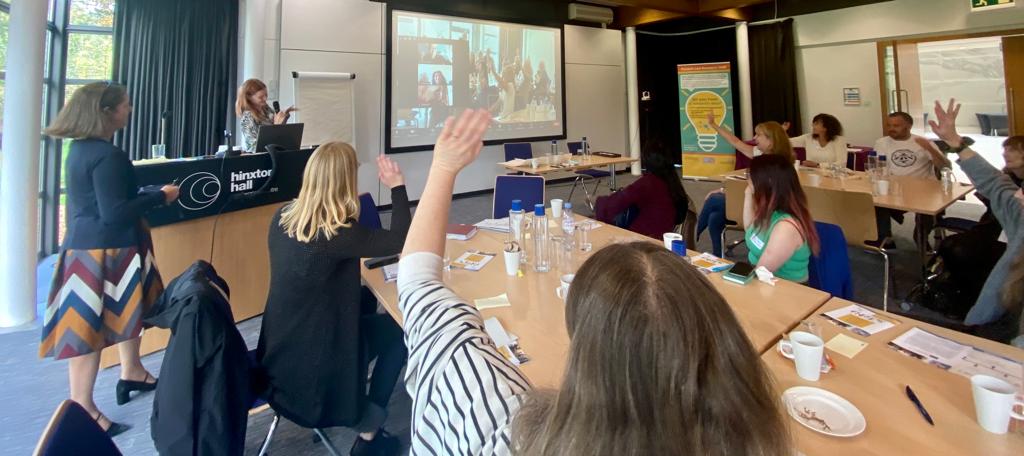
At the heart of this project is the idea that patients, as the experts of their own conditions, should play a central role in driving research. Too often, rare disease research is steered by external agendas, leaving the community’s real needs underexplored. The RDRN aims to change that by creating a network where patients can take control, form partnerships, and influence the direction of research in meaningful ways.
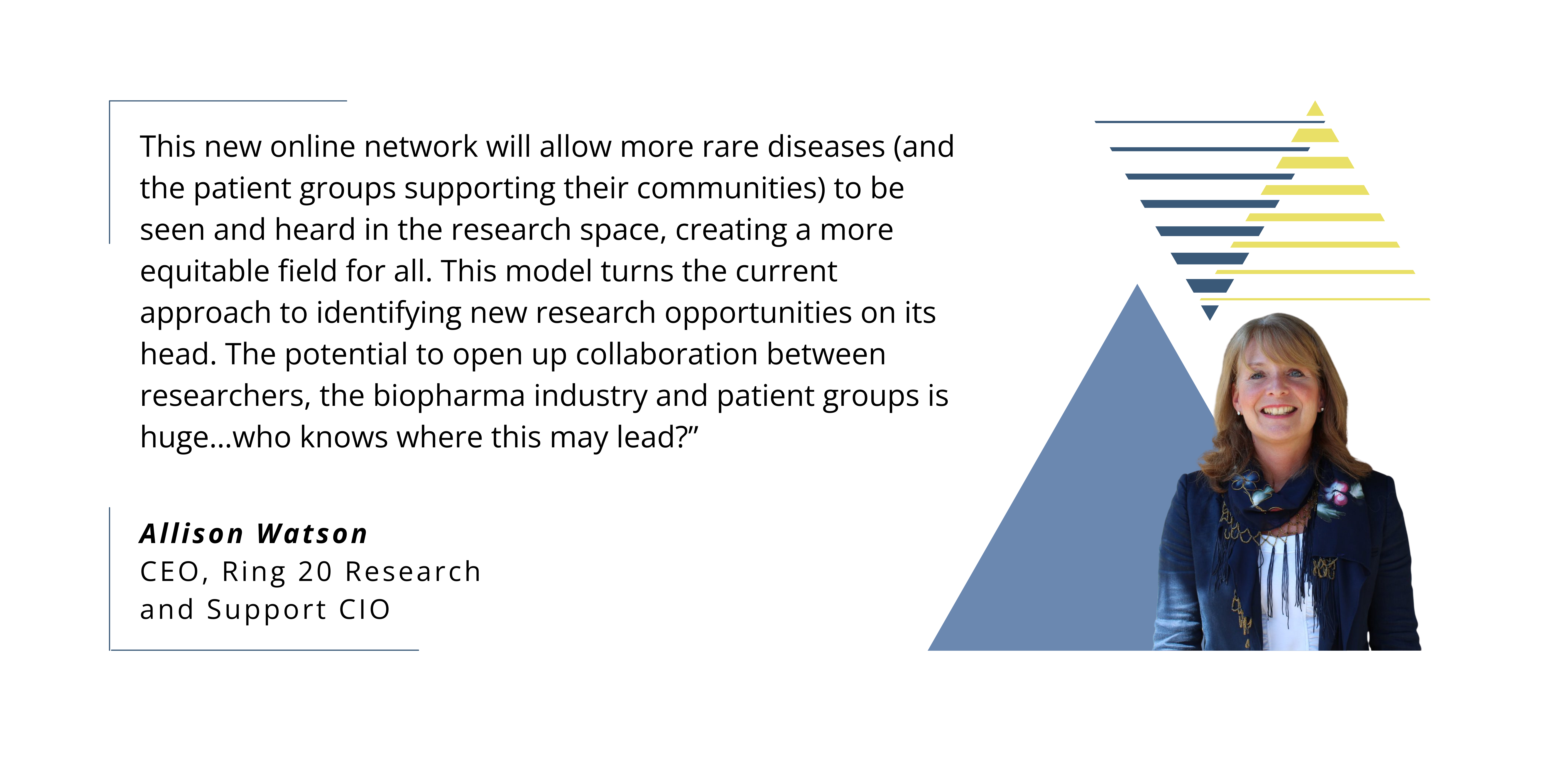
By June 2024, the RDRN working group had hit a major milestone: a fully functioning platform with sign-up processes, intuitive search tools, filters, and completed main pages. But the real story of this network is not about technical milestones—it’s about the people who built it. Every feature of RDRN has been shaped by the ideas, feedback, and lived experiences of the rare disease community. The working group, a passionate collective of community members and advocates, left no stone unturned, making sure the platform met the community’s needs at every level.

I have really enjoyed being part of RDRN as it has given me the opportunity to share my lived experience as a patient and raise awareness about the importance of building in mental health support for research and clinical trials which I feel would benefit the rare disease community as a whole.
David Ross; RDRN Working Group Member; Patient Advocate at Rare Disease Mental Health, United Kingdom
Thanks to the tireless work of the RDRN website developer, Lewis from RedWeb, the ideas generated by the community were translated into a fully functioning digital platform that will launch at Rarefest24, in November 2024. Rarefest is a festival dedicated to rare diseases in the heart of Cambridge, hosted by the Cambridge Rare Disease Network.
Meanwhile, a dedicated team created resources to support patient-driven research, and a community management group developed strategic and business plans to ensure the long-term success of RDRN.
This collaborative process is a stellar example of what can be achieved when the rare disease community takes the reins, driving research from start to finish. The RDRN platform is more than just a website; it’s a dynamic, supportive hub where patients, researchers, clinicians, and industry partners can connect and work together on projects that make a real difference.

One of the things that sets RDRN apart is the breadth of community involvement. The platform was built by a range of teams, each focusing on a different aspect of its development. Together, they made sure that every detail was considered from multiple perspectives.
The working group was the engine of the project. Since October 2023, this group has been meeting regularly to design, test, and refine the platform. Their dedication has been essential in creating user-friendly features that will allow patients, researchers, and advocates to collaborate seamlessly.
A huge thank you goes to the working group members: Matthew Baker, Pete Chan, Ellie Dalby, Katie Dexter, Ross Jackson, Kelly Kearley, Loretta MacInnes, Sailaja Maganti, Rebecca Middleton, Sophie Muir, Caroline Olshewsky, Jill Prawer, Stephanie Prince, David Ross, Sue Routledge, David Salmon, Carole Scrafton, Tatty Scott, Karen Whitehead. Their innovative insights and collaborative spirit have created something truly special.
Meanwhile, the marketing and communications team worked on making sure RDRN came to life visually and conceptually. They developed a striking logo, tagline, and colour scheme, each designed to reflect the network’s patient-centred ethos. The opposing triangles in the logo represent the “turning of research on its head”, symbolising the shift from investigator-led to patient-driven research. Thank you to Pete Chan, David Salmon and Franky Yu for their innovative vision.

Special thanks to Ellie Dalby, Tatty Scott, and Chelsea Wong for their contributions to shaping RDRN’s visual identity. Their creativity ensured that the platform is as accessible as it is impactful.
The community management team also played a critical role, in guiding the strategic direction of RDRN. This group tackled everything from creating a business plan to determining how best to engage with industry partners. Their efforts laid the groundwork for a platform that will continue to grow and evolve long after its launch. A big thank you to Pete Chan, Clarinda Cerejo, Libby Humphris, Sailaja Maganti, Rebecca Middleton, Laura Smith van Carroll, and Allison Watson for steering the ship so effectively.
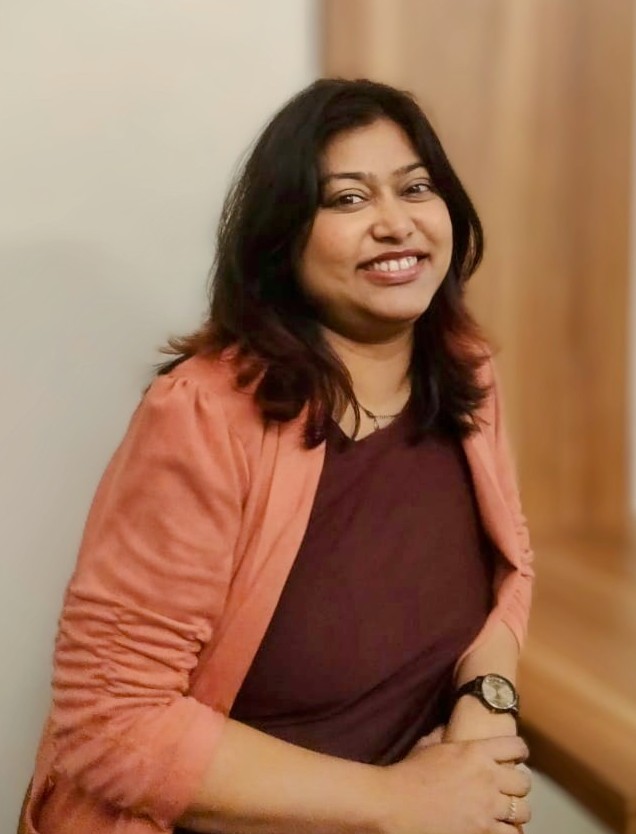
As a rare disease patient, patient expert, and patient author with a background in research communication, it has been a pure delight for me to see RDRN take shape. Having spent a large part of my career working with academics, I fully realise that reimagining the research model to put patients in the driver's seat is a tall order, but I believe this is precisely what is needed to accelerate rare disease research. I've deeply valued the opportunity to contribute my expertise to the RDRN Management Committee and to learn from the rich insights and expertise of the other Committee members. I look forward to RDRN launching and rapidly becoming the gold standard model for research in rare diseases.
Clarinda Cerejo; RDRN Management Team; Patient Expert and Patient Engagement Consultant, India
Another crucial element of the platform is the resources development team, which created guidance and tools to support patient-driven research. These resources, crafted with care, will help patients engage with researchers, refine their ideas, and kickstart their own projects. This team—comprising Ellie Dalby, Sarah Dearman, Mel Dixon, Loretta MacInnes, David Ross, Carole Scrafton, and Franky Yu—ensured that the platform would not only connect people but also empower them to take action.
The launch of the RDRN in November 2024 marks the beginning of an exciting journey. But the platform’s development doesn’t stop here. The network is designed to be dynamic and responsive, with future features planned based on community feedback.
Upcoming updates could include a live spreadsheet of funding calls, a potential RDRN fund to support patient-driven research projects, a formalised mentoring programme, and even new tools like live chat rooms for discussing research ideas. The future of RDRN is bright, and it will continue to be shaped by the same community members who have brought it to life.

Being part of the Rare Disease Research Network has been an incredibly fulfilling experience. This role has given me a new perspective on how patient groups can lead rare disease research. The most remarkable aspect of this work is how it promotes a bottom-up strategy—where patient groups lead research, Being involved with the Rare Disease Research Network has given me a profound appreciation for the resilience of rare disease families. I’m proud to be part of a community that’s driving real change, ensuring that research is patient-centred and truly meets the needs of those it aims to help.
Franky Yu; RDRN Marketing Consultant; RDRN Resources Team; Over 10 years of experience in the Pharmaceutical Industry and Orphan Drugs, from Hong Kong
Whether you’re a patient with an idea, a researcher looking to collaborate, or a clinician passionate about rare disease research, the RDRN is your space to make an impact. Creating an account is your first step toward unlocking the full potential of this vibrant network.
Once you’ve signed up, you can showcase your research ideas, connect with others, and access a wealth of resources designed to help you at every stage of your research journey. RDRN is more than just a platform—it’s a community where everyone has a voice, and together, we can revolutionise the future of rare disease research.
RDRN is a living testament to the power of community. It’s proof that when patients, researchers, and advocates come together as equal partners, remarkable things can happen. The platform’s patient-driven approach isn’t just innovative—it’s transformative. The community’s fingerprints are on every aspect of this project, and as it continues to grow, it will remain firmly in their hands.
As we look toward the future, one thing is certain: the Rare Disease Research Network will continue to be a beacon for patient-driven research, setting a new standard for what’s possible when the rare disease community leads the way.
